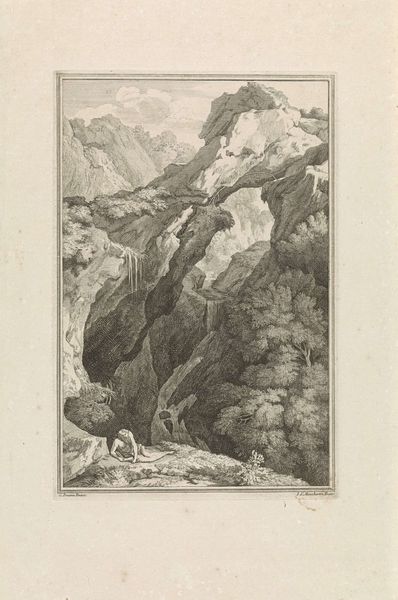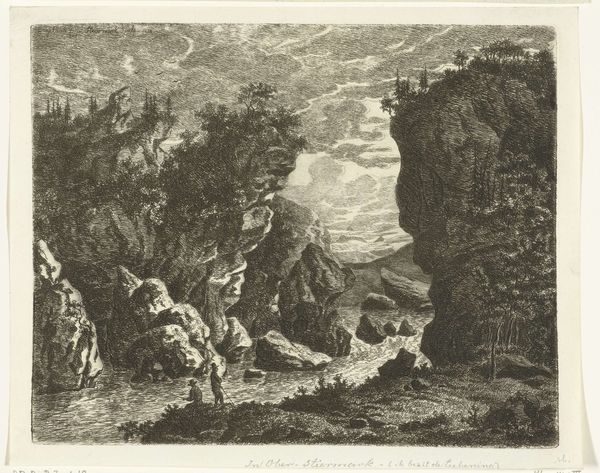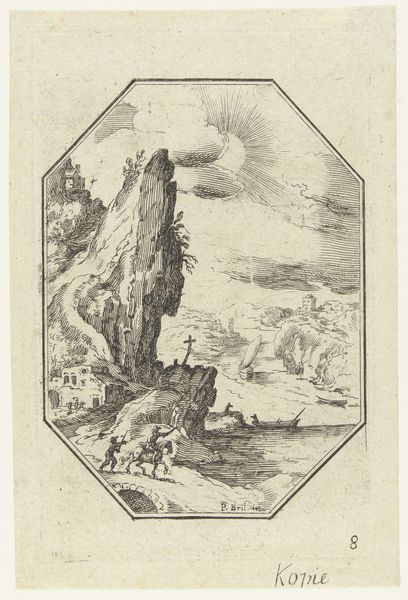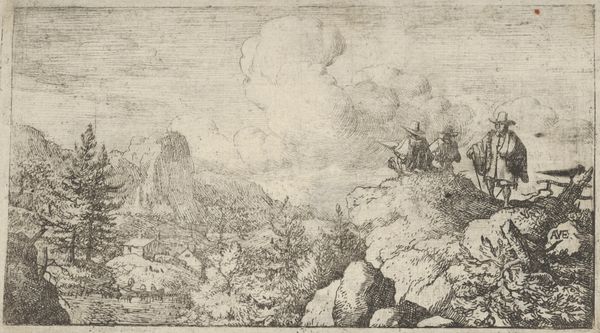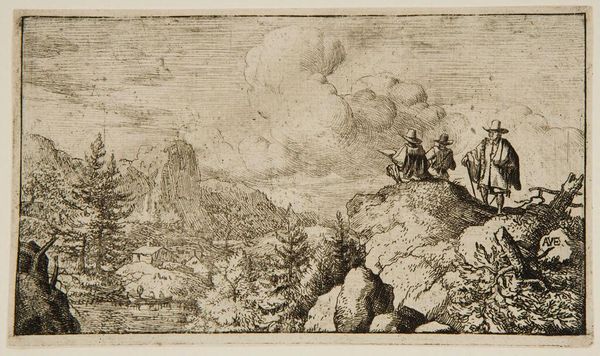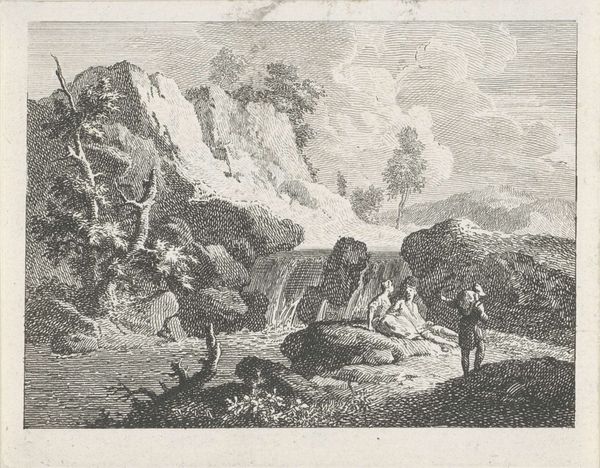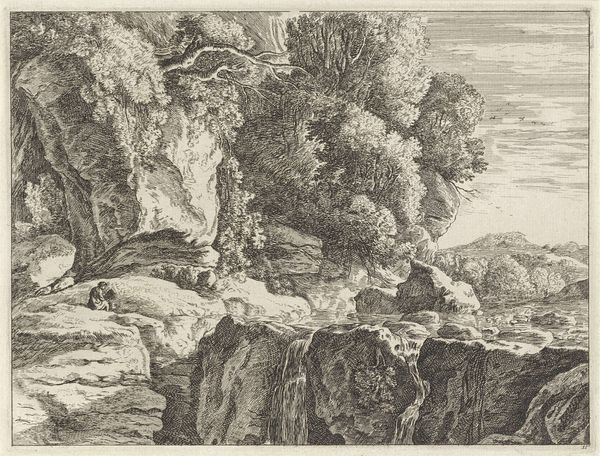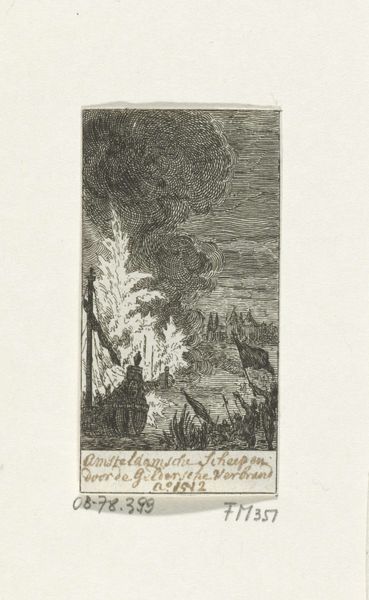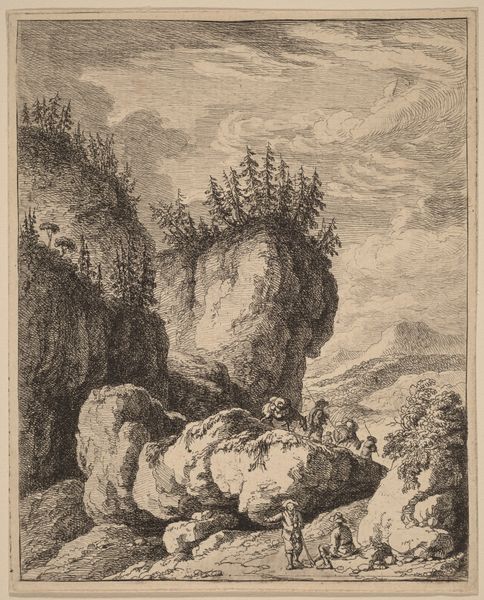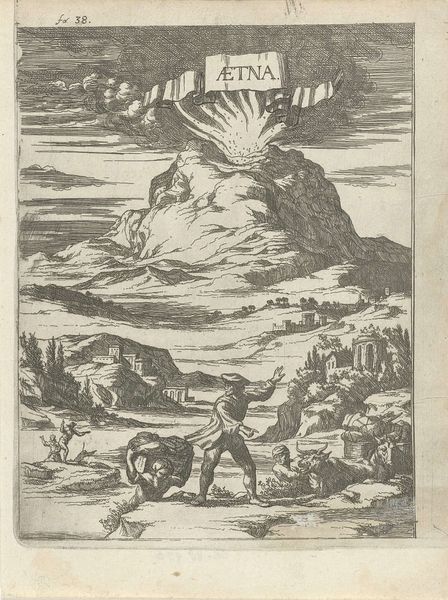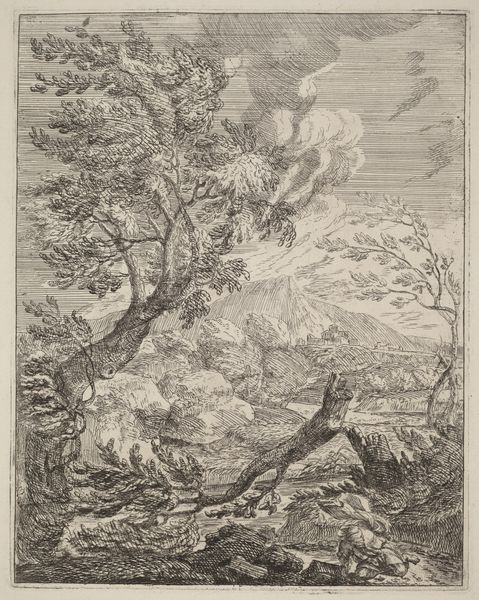
drawing, etching, intaglio, pen, engraving
#
pencil drawn
#
drawing
#
pen sketch
#
etching
#
intaglio
#
pencil sketch
#
landscape
#
waterfall
#
pencil drawing
#
pen-ink sketch
#
mountain
#
line
#
pen
#
pencil work
#
engraving
Dimensions: height 139 mm, width 120 mm
Copyright: Rijks Museum: Open Domain
Editor: So, here we have Jacob Lutma's "Mountain Landscape with Wanderer and Donkey," created sometime between 1634 and 1654. It’s an etching, quite small and incredibly detailed. What strikes me is the labor involved in creating all those tiny lines. What can you tell me about it? Curator: Well, focusing on that labour, on the act of production, is key. Look closely at how the landscape is constructed, bit by bit, through the layering of lines. This isn’t just a picture of a mountain; it's an object created through very specific material practices. Think about the social context: who was producing prints like these, for whom, and under what conditions? Editor: So, you're saying the value is in understanding its production and consumption within that time? Curator: Precisely. Etchings like this were often reproduced and sold relatively cheaply, making them accessible to a wider audience than, say, an oil painting. But what kind of lifestyle can you deduce from such an intimate artwork? The level of detail, for instance, signals the degree of mastery Lutma acquired. But think further; how does the mode of reproduction influence how landscapes like this were consumed or understood by the viewer? Editor: I see what you mean. Knowing it was more widely accessible makes me reconsider the idea of the solitary wanderer. It's like, this scene is brought into your home... available for personal consumption! Curator: Exactly! Consider, too, the materiality of the print itself—the paper, the ink, the marks left by the etching tool. The ‘high art’ image comes from everyday production, through these humble means. What would this landscape represent as an object of commerce versus aesthetic representation? Editor: So interesting. I guess I was too focused on the "art" part and missed the material realities behind it. Curator: Often, the material reality informs our interpretation. It’s always more complicated and interwoven. It’s that tension, that space between high and low, art and craft, which really animates these works for me.
Comments
No comments
Be the first to comment and join the conversation on the ultimate creative platform.

